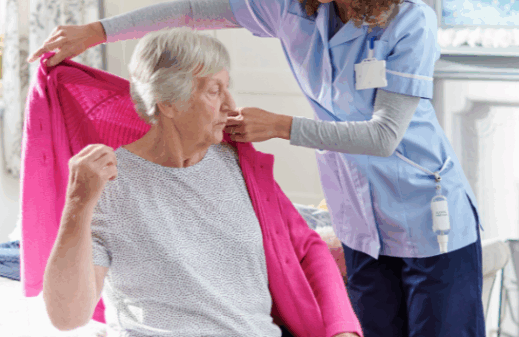Bedsores (also called pressure ulcers) are very common in elderly people that are immobilized or bedridden in assisted living care. They are caused by unrelieved pressure on an area of the body, usually the back, buttocks, or hips and they can cause infections, sepsis, loss of muscle, and in some serious cases, death. Fortunately, bedsores are easier to prevent than they are to heal, and there are many ways to prevent them.
- If a person is immobilized or bedridden, they need to be moved every 2 hours to prevent pressure from building up on the skin. A lift can be used to reduce friction against the skin while the patient is moved.
- Keep their body, particularly the folds of the skin, clean and dry. When drying the patient, do not rub vigorously; this causes friction against the skin. Gently pat the skin dry.
- An inspection needs to be performed daily by the assisted living care giver on the patient. The first stage of a bedsore is a red spot, which feels hard and causes discomfort for the patient when touched. If caught early, the bed sore can be treated by keeping the patient off the area and applying medicated cream.
- Use aids that reduce pressure, such as air cushions. Avoid using donut cushions, they make the skin sit unevenly and actually increase the risk of developing bedsores.
- Change the patient immediately if he or she becomes wet, along with their bedding. Lying in urine/feces even for a few minutes can increase the risk of a bed sore.
- Body lotion and/or baby powder keeps the skin soft and dry, reducing the risk of bed sores.
- Make sure the patient is eating well and drinking plenty of fluids. Malnutrition and dehydration are some of the leading causes of bed sores.
- Keep the head of the bed low if possible. An elevated head position causes the body to sink into the mattress, which causes friction that increases bedsore risk.
- Diabetics are highly prone to bedsores. Monitor their blood sugar and ensure they follow a proper diabetic diet.
- A common area for bedsores to occur are on the heels of the feet, because they lie against the bed for long periods of time. Tuck a pillow underneath the person’s calves to help lift pressure off the heels. Avoid placing a pillow under the knees; often it will cut off circulation to the feet.



